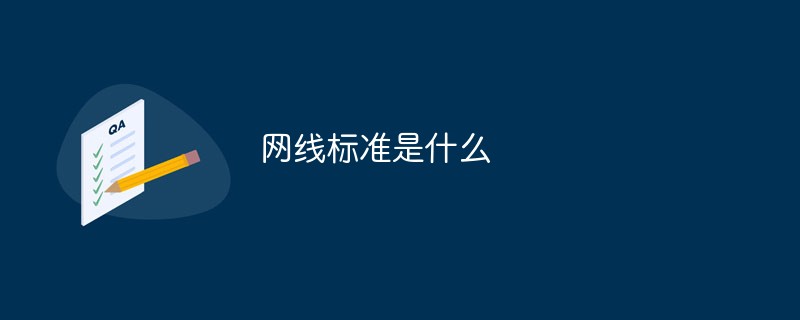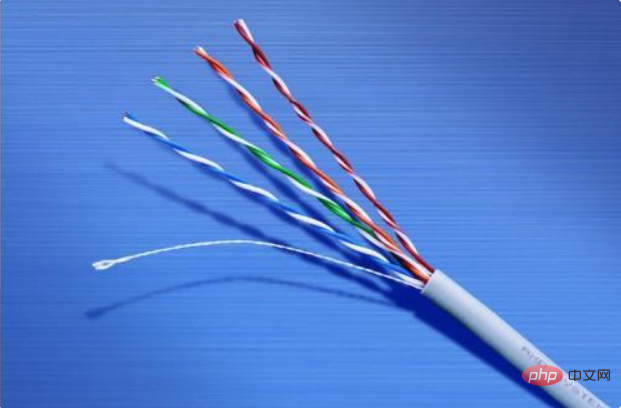Home >Common Problem >What is the network cable standard?
Network cable standards: 1. There are two standards for network cable termination, namely T568A and T568B; 2. There are two main connection methods for twisted pair cables, namely straight-through cables and crossover cables.

Network cable standards:
There are two standards for network cable termination: T568A and T568B, and twisted pair There are also two main connection methods: straight-through cables and crossover cables.
Both ends of the crystal plugs of the straight-through cable follow the T568B standard. Each group of twisted-pair lines corresponds one-to-one at both ends. The same color is consistent in the corresponding slots of the crystal plugs at both ends. It is mainly used when the Uplink port of the switch (or hub) is connected to the ordinary port of the switch (or hub) or the ordinary port of the switch is connected to the computer network card.
One end of the crystal head of the crossover cable follows the 568A standard, while the other end adopts the 568B standard, that is, 1 and 2 of the A crystal head correspond to 3 and 6 of the B crystal head, while 3 and 6 of the A crystal head Corresponding to 1 and 2 of the B crystal head, it is mainly used to connect the ordinary port of the switch (or hub) to the ordinary port of the switch (or hub) or the network card to the network card.
When terminating horizontal lines in integrated cabling projects, GB 50312 accepts category T568B or category T568A, but simultaneous installation is not allowed. It is usually terminated according to category T568B.

Extended information:
Network cables are classified as follows:
1. Class I cable: mainly used for transmission Voice (a standard used mainly on telephone cables before the early 1980s), is different from data transmission.
2. Category II line: The transmission frequency is 1MHZ, used for voice transmission and data transmission with a maximum transmission rate of 4Mbps. It is common in old token networks that use the 4MBPS standard token passing protocol.
3. Category III cable: refers to the cable currently specified in the ANSI and EIA/TIA568 standards. The transmission frequency of this cable is 16MHz. It is used for voice transmission and data transmission with a maximum transmission rate of 10Mbps. It is mainly used for 10BASE. --T.
4. Category 4 cable: The transmission frequency of this type of cable is 20MHz. It is used for voice transmission and data transmission with a maximum transmission rate of 16Mbps. It is mainly used for token-based LAN and 10BASE-T/100BASE-T.
5. Category 5 cable: This type of cable has increased winding density and is coated with a high-quality insulating material. The transmission rate is 100MHz. It is used for voice transmission and data transmission with a maximum transmission rate of 10Mbps. It is mainly used for voice transmission and data transmission with a maximum transmission rate of 10Mbps. For use in 100BASE-T and 10BASE-T networks. This is the most commonly used Ethernet cables.
6. Category 5e cable: Category 5e has small attenuation, less crosstalk, higher attenuation to crosstalk ratio (ACR) and signal-to-noise ratio (Structural Return Loss), smaller time Latency is poor and performance is greatly improved. Category 5e cables are mainly used for Gigabit Ethernet (1000Mbps).
7. Category 6 cable: The transmission frequency of this type of cable is 1MHz ~ 250MHz. The Category 6 wiring system should have a large margin in the comprehensive attenuation crosstalk ratio (PS-ACR) at 200MHz. It provides 2 Times the bandwidth of Category 5e.
The above is the detailed content of What is the network cable standard?. For more information, please follow other related articles on the PHP Chinese website!